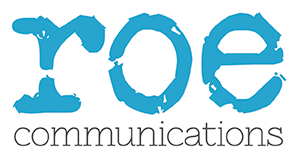The two ingredients that you will need.
Many business schools do a good job when it comes to getting media coverage in their regional or technical trade press.
Undoubtedly, these are invaluable for raising awareness of school activities. This is particularly the case if you are trying to target certain student personas or want to cultivate regional partnerships.
But if your school is not being featured regularly in the national or international press, you are missing out on opportunities to be seen by important decision-makers within government and business.
Developing a high profile at the moment is particularly important because:
- It is proven that prospective students are influenced by outlets such as the BBC, FT and The Economist when they are searching for business education courses
- A high profile and a reputation for excellence enables business schools to support income generation from their enterprise or business engagement activities
- Many schools want to position themselves at the forefront of ‘building back better’, by showing their role in supporting business recovery from COVID-19
- It enables schools to fulfil their longer-term strategies, such as being an effective partner in the delivery of industrial strategies and supporting business growth
- Schools want to be seen as anticipating and matching their expertise to organisational and individual needs and having expertise in specific sectors
- Academic research and student experiences are some of the key differentiators that students use when assessing different schools
Clearly, COVID-19 has had a huge impact on the business education sector – not least that already-tight marketing budgets are being squeezed even more.
But there are still ways for hard-pressed PR departments to elevate their media coverage.
The key to this is first to recognise that you can’t do it all. Now, more than ever, there needs to be a strong strategic focus on what you want to achieve and, crucially, why?
Doing PR for PR’s sake is not a smart option. And this comes to the second point, which is – let some things go.
One of the main reasons why a press office’s time is sucked up within business schools is the internal pressure to make all manner of media announcements about all manner of things.
New programmes, awards, faculty appointments and so on may get the odd mention, but it is not going to win you any favours within the mainstream media. This might mean having tough, but honest, conversations internally to explain to people why their favoured project will not be getting support from the press office.
There are two ingredients that you need if you want to get into the mainstream media.
- Angles
News journalists receive hundreds of pitches from PRs every week and they have very little time to assess them. Having the right angle is the difference between them picking up the phone or sending your email to their trash folder.
Developing strong angles depends upon several things being in place:
- Being able to spot the strongest angles within academic research – and translate them for a lay audience.
- Making your story relevant – why would that journalist’s audience care – and why now?
- Developing strong and effective working relationships with faculty, especially spokespeople
- Educating faculty about what is and isn’t newsworthy.
- Access
Often when people start talking to a PR agency, they want to know about their contacts in the media. Being able to open a door with a journalist because of your previous relationship is key.
But creating access to the media is also about:
- Understanding how journalists work and the best ways and times to contact them. For instance, at present, many journalists are still currently working at home. And because of contracted production schedules their daily news conferences are often much earlier than in normal times
- Engendering an understanding of the press process internally, so that you can deliver timely, topical stories to the media
- A pro-active, flexible mindset, constantly making new journalist contacts and media opportunities.
Finally – achieving a high profile is also about creating sustainable PR that works for the long-term. The media is a fluid thing. Not only do journalists move around, but they are constantly chasing the next topical story.
By creating a strong internal process for achieving a regular flow of content, you can keep them engaged and ensure that your school is top-of-mind for their next story.


